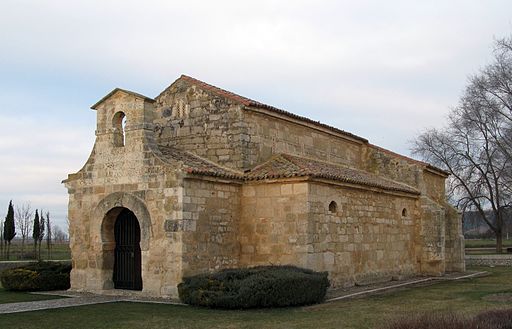Roman Emperor Theodosius (Teodosio) divided the Roman Empire into two parts: The Western Roman Empire (capital in Rome) and the Eastern Roman Empire (capital in Constantinople.)
The Iberian Peninsula was invaded by Germanic tribes from the north and centre of Europe. In 409, the first Germanic tribes (the Romans called them "barbarians") arrived there: the Suebi (suevos), Vandals (vándalos), and Alans (alanos).
The Romans asked the Visigoths (visigodos) for help in 415 AD.
After the Western Roman Empire fell in 476 AD, The Visigoths established a kingdom that stretched across the Pyrenees. It was called Toulouse (Tolosa.)

In 507, the Visigoths lost much of their kingdom and only kept the land they had in the Iberian peninsula. They set up their capital in Toledo. (See the map in your book on pg. 89.)
The Visigoths held on to (kept) much of Roman culture: they used the Latin language, and Roman law.
In 589, the Visigothic king Reccared (Recaredo) converted to Catholicism, and so did the rest of his country.

La conversión de Recaredo, por Antonio Muñoz Degrain, 1888.
Some important artifacts from the Visigothic Kingdom:
The Crown of Recesvinto from the treasure of Guarrazar:

See it in ·3D here:
The church of San Pedro Nave in Zamora:

Some important artifacts from the Visigothic Kingdom:
The Crown of Recesvinto from the treasure of Guarrazar:
See it in ·3D here:
The church of San Pedro Nave in Zamora:

The church of San Juan de Baños, Palencia:

In 711, Muslim forces invaded and defeated the last Visigothic King, Roderic (Rodrigo), in the Battle of Guadalete. This began the period of Muslim domination of the Iberian Peninsula.
No hay comentarios:
Publicar un comentario